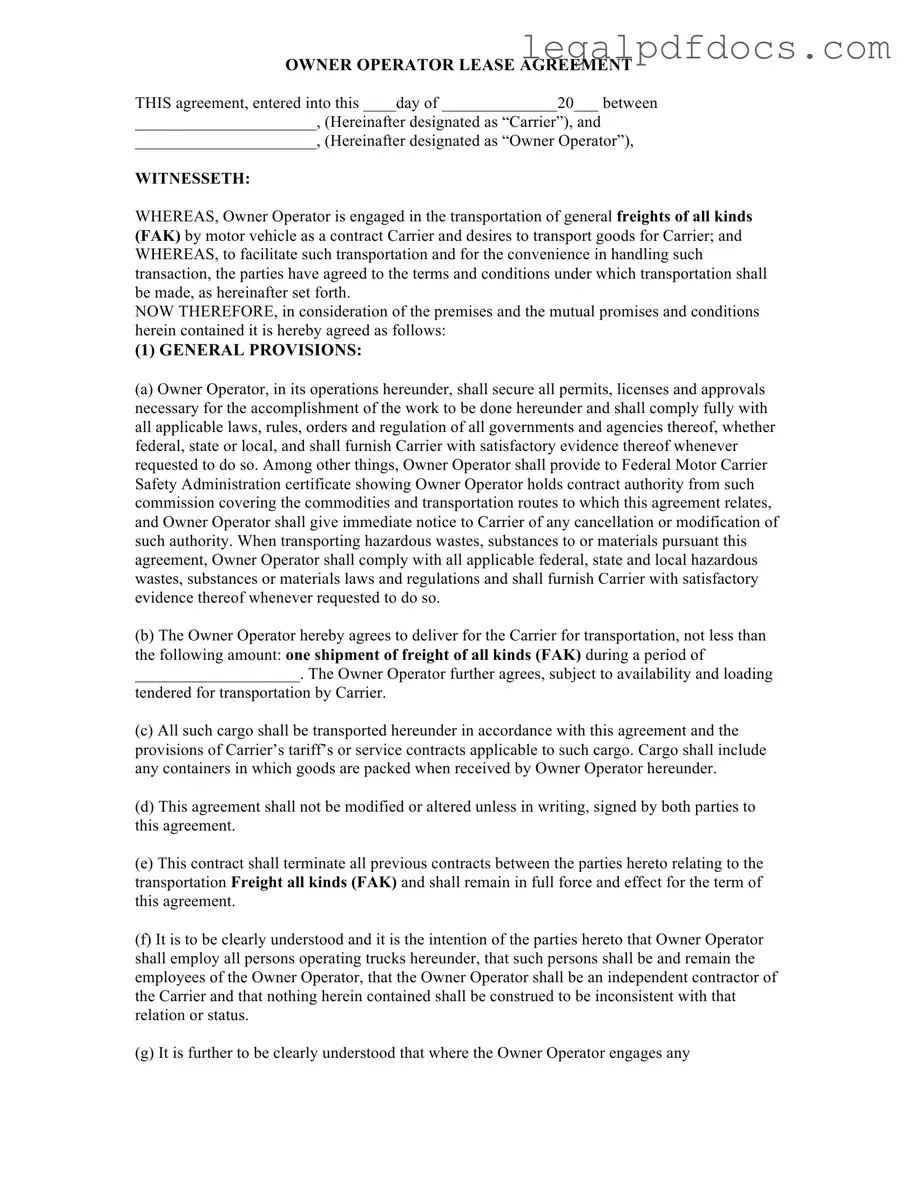The Owner Operator Lease Agreement form is a crucial document that outlines the relationship between a Carrier and an Owner Operator engaged in the transportation of goods. This agreement establishes the terms and conditions under which the Owner Operator will transport freight for the Carrier, ensuring compliance with all necessary regulations and legal requirements. Key aspects of the form include provisions for securing permits and licenses, responsibilities for cargo care and custody, and the obligations related to insurance coverage. The document also details the compensation structure, confidentiality requirements, and the process for providing written receipts for goods received. Furthermore, it emphasizes the independent contractor status of the Owner Operator and stipulates that any modifications to the agreement must be made in writing. By clearly defining these elements, the Owner Operator Lease Agreement serves to protect the interests of both parties while facilitating smooth operations in the transportation industry.
